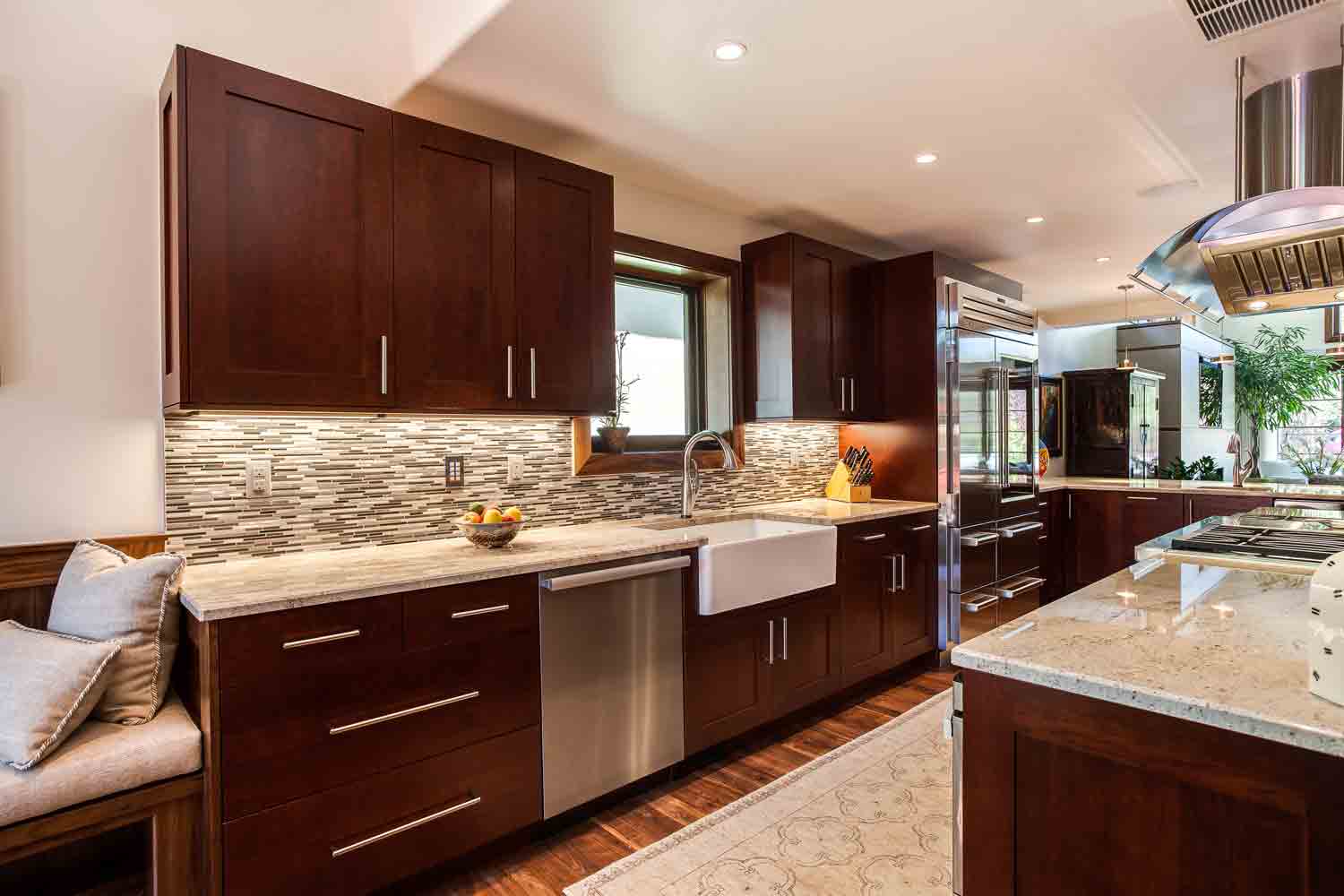Cherry Corner Kitchen Cabinet Design & Functionality

Cherry corner kitchen cabinets offer a blend of elegance and practicality, maximizing storage in often-underutilized spaces. Careful consideration of design, materials, and installation techniques is crucial for achieving both aesthetic appeal and functional efficiency. This section explores various aspects of cherry corner cabinet design, installation, and material comparisons.
Cherry Corner Kitchen Cabinet Design Styles
Several design styles cater to different kitchen sizes and aesthetic preferences. For small kitchens, a smaller, shallower corner cabinet with a single lazy susan or a cleverly designed pull-out shelf system can maximize storage without overwhelming the space. Dimensions might range from 24″ wide x 24″ deep x 36″ high to 30″ wide x 24″ deep x 36″ high. Material choices could include solid cherry wood for the frame and doors, with plywood or medium-density fiberboard (MDF) for the interior shelving to reduce cost. Simple, brushed nickel hardware complements the warm tones of cherry. In larger kitchens, larger corner cabinets with double lazy susans or multiple pull-out shelves are feasible. Dimensions could range from 36″ wide x 36″ deep x 36″ high to 48″ wide x 36″ deep x 36″ high. For these larger cabinets, consider using higher-quality, thicker cherry wood throughout for enhanced durability and a more luxurious appearance. Elegant, antique brass hardware could be incorporated for a more traditional look.
Cherry Corner Kitchen Cabinet Installation
Proper installation is key to ensuring the longevity and functionality of the cabinet. The following table Artikels the process:
| Step | Tools | Safety Precautions | Troubleshooting |
|---|---|---|---|
| Cabinet Placement & Leveling | Level, measuring tape, pencil | Ensure proper support and weight distribution | Adjust shims under the cabinet for leveling |
| Securing to Wall Studs | Drill, screws, stud finder | Wear safety glasses; avoid over-tightening screws | Use longer screws if studs are not easily accessible |
| Installing Doors and Hardware | Screwdriver, hinges, knobs/pulls | Handle hardware carefully to avoid damage | Adjust hinge screws for proper door alignment |
| Installing Interior Components (Lazy Susan, Shelves) | Screwdriver, appropriate fasteners | Follow manufacturer’s instructions carefully | Ensure proper alignment and functionality of moving parts |
Cherry Wood vs. Other Materials for Corner Cabinets
The choice of wood significantly impacts the cabinet’s durability, cost, and aesthetic appeal.
Cherry corner kitchen cabinet – The following bullet points compare cherry with maple and oak:
- Durability: Cherry, maple, and oak are all relatively durable hardwoods. Cherry’s durability is slightly less than oak’s but greater than maple’s, making it a good middle ground.
- Cost: Cherry generally falls in the mid-range price bracket, more expensive than maple but less costly than higher-grade oak.
- Aesthetic Appeal: Cherry possesses a rich, warm reddish-brown tone that darkens with age, offering a classic and elegant look. Maple has a lighter, more uniform color, while oak exhibits more prominent grain patterns and a more rustic appearance.
Corner Cabinet Configurations, Cherry corner kitchen cabinet
Various corner cabinet configurations optimize space utilization.
Descriptions of three common configurations follow:
- Lazy Susan: This configuration features rotating circular shelves, providing easy access to items stored in the corner. Imagine two circular shelves that spin independently within a square cabinet, allowing for 360-degree access.
- Blind Corner: This is a simple, less expensive option with fixed shelves that are difficult to access. It’s essentially a square cabinet with shelves that are partially or completely inaccessible due to the corner angle.
- Magic Corner: This system utilizes a series of pull-out shelves or trays that swing out from the cabinet, allowing full access to all corners. Visualize a series of shelves that move outwards in a “V” shape, providing full visibility and access to all items.
